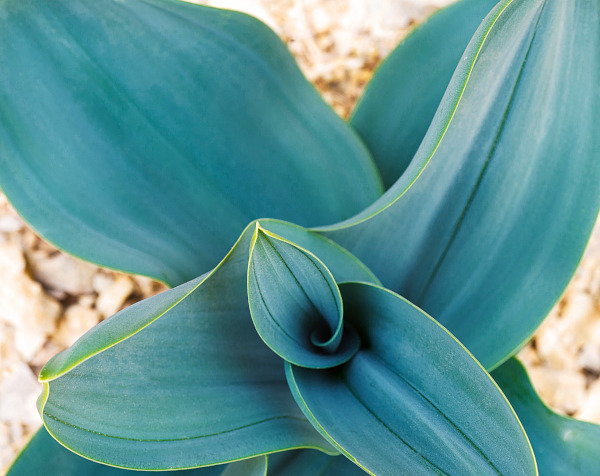How to grow Urginea
Imposing, unusual and dramatic, Urginea are a diverse family, most originate in dry arid areas of Europe and western Asia, seen growing in rocky coastal areas.
Urginea Maritima is a hardy Mediterranean giant, also known as Sea Squill and is often seen growing on shallow stony soils.
A rosette of leathery, green leaves with a blue tinge, each up to a meter long starts to develop in late autumn and winter and stays green through the colder months. The long, sword-shaped foliage acts as a fantastic plinth for several, fascinating, thick, upright flower stalks that start to appear in summer. By the time these stalks have grown to their full height, the foliage has totally died back.
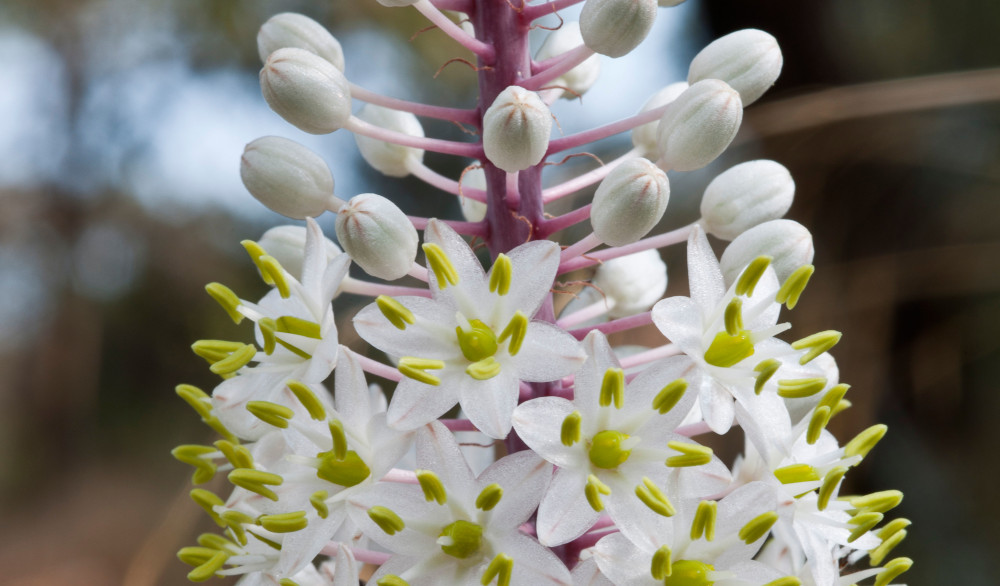
Key Information
Soil pH
Position
Hardiness

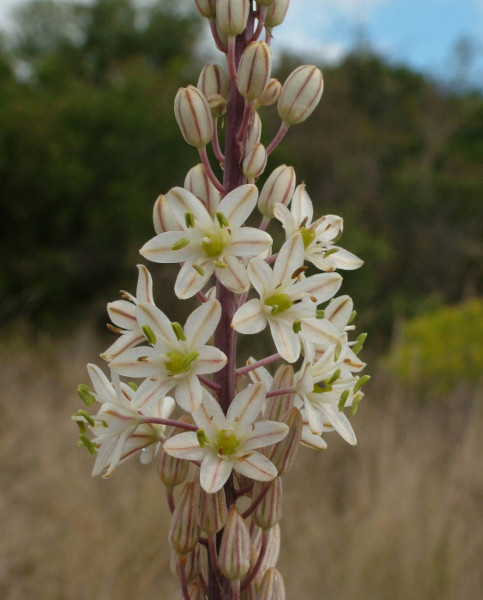
Where & when to plant Urginea
Position - Full sun or part shade
Soil - Well-drained
Flowering - Late summer
Hardiness - Half hardy
Urginea are large bulbs which form clumps just on the surface of the soil. For best results, they should be planted in the autumn, in to moist but well-drained soil. They prefer a sunny spot but can cope with part shade. If you are not ready to plant your Urginea bulbs when you receive them, store in a cool, dry, well-ventilated place in temperatures between 4-20°C for a short while but be careful they do not dry out too much. Alternatively, you could plant them in moist compost in a pot until you are ready.
A geophyte – meaning that it typically stores energy and water in storage organs beneath the soil surface – the intriguing looking bulbs are almost totally above the ground. Enveloped in several papery layers that prevent moisture loss and protect them from the heat of the summer sun, even from fires.
Used medicinally for centuries, although like many ornamental bulbs, they are slightly toxic and can cause stomach upsets if ingested in large doses. We therefore recommend that you wash your hands when you have handled any bulbs. However, this does mean that rodents tend to leave them well alone.
Growing to a height of 90cm and often taller, the bulbs will happily naturalise in the right conditions, dry, rocky, poor soil. Watch with fascination as the large bulbs split into two, creating larger clumps in time.
Each plant only spreads to around 60cm, so it is perfect for a sunny courtyard or a smaller garden but will still pack a punch in a larger garden.
How to plant Urginea
If your soil is not well-drained, you should mix in some horticultural grit or organic matter to increase drainage. If in doubt, you can always start your bulbs in pots in a protected area over winter, and plant out in spring.
If planting in the ground, dig a hole and place in your bulb, pointed side upwards. When planting your bulbs, you should make sure they are partially visible above the soil, around 3cm showing, then fill in the hole with soil. Space the bulbs approximately 30-60cm apart to allow room for each one to spread.
If you are growing your Urginea in containers, chose a large one and add some stones or crocks to the bottom, this will help with drainage and also with stability. Use a good quality multi-purpose compost and plant the bulb as above.
Once planted, water thoroughly and deeply to settle your bulbs in place and to encourage a healthy root development system.
Urginea have been used medicinally for centuries but can be toxic in large doses, so please wash your hands after handling.
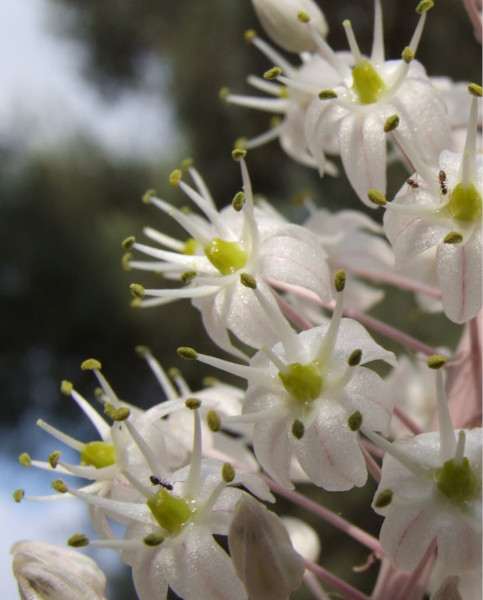
What to plant with Urginea
Urginea are imposing plants, creating a dramatic statement when planted alone, creating quite an impressive clump when they have naturalised.
However, when grown amongst grasses or interspersed Allium they look incredible.
When choosing companion plants, think about the growing conditions that are preferred by each plant. Maybe grow Urginia maritima with Allium Forelock, Moly or Hair – the almost globe-like spheres of blooms will hover above the foliage but will have faded by the time the Urginea flowers have fully developed so will not detract from the spectacle.
Whether grown in borders or containers, the period when the foliage is absent could be filled with a low growing, evergreen carpet of Delosperma Suntropics Purple, Copper or Red, which become covered with bright almost neon coloured daisy-like flowers from spring until the first frosts.
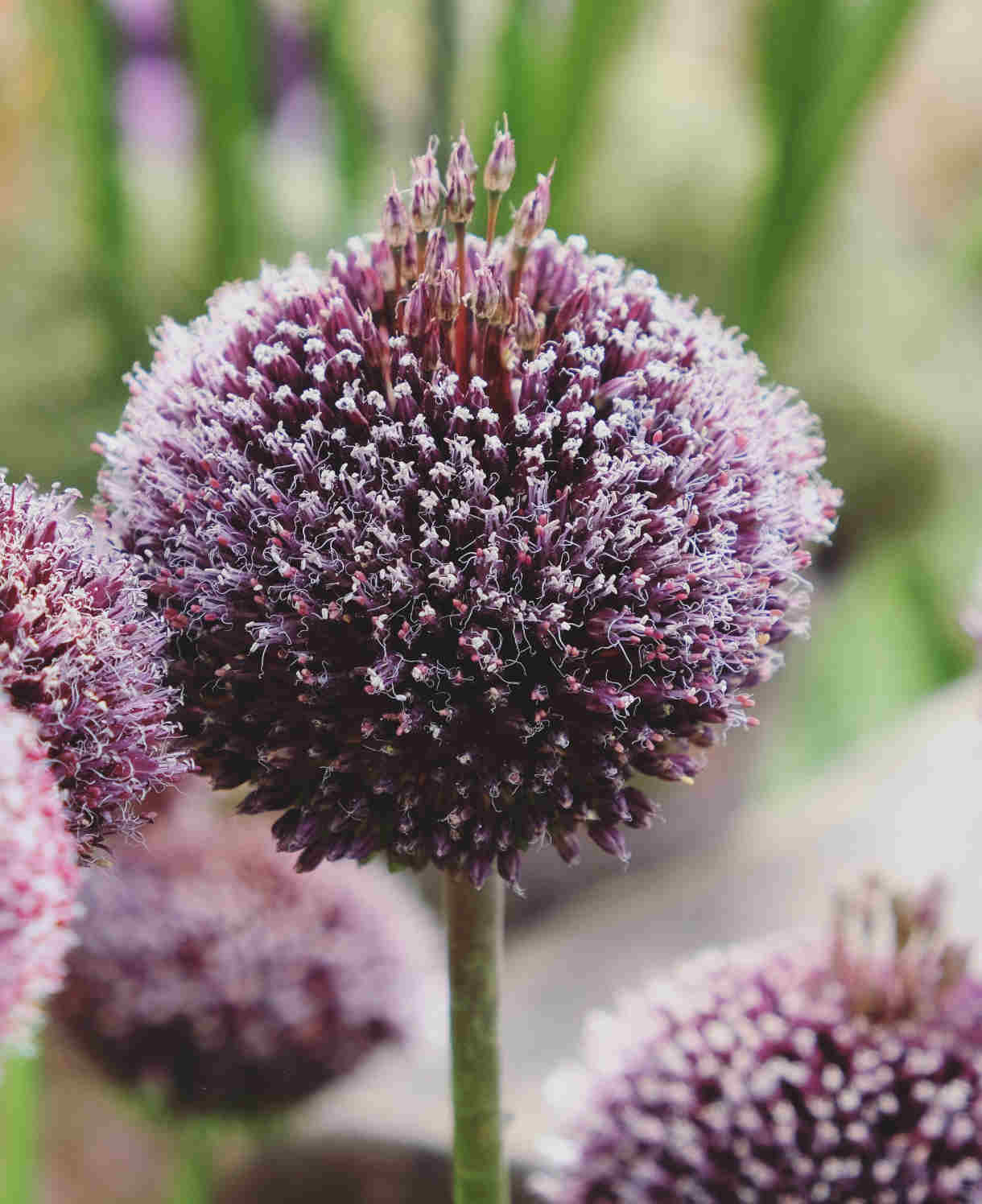

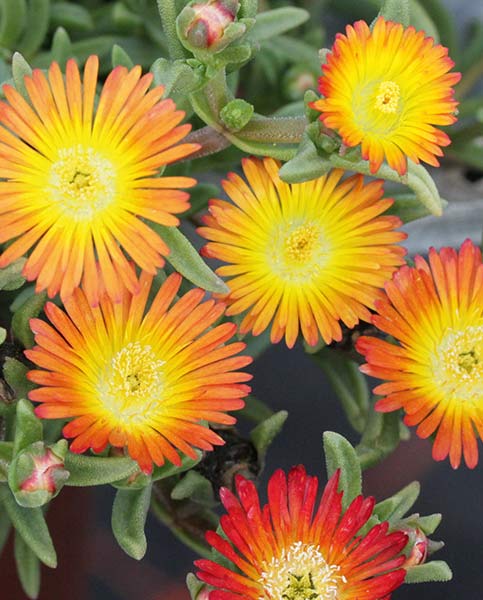
How to care for Urginea
Water occasionally during active growth, Urginia are very drought tolerant and do not tend to need feeding. Stop watering once the flower has appeared and has faded, so that the bulb does not get too wet and rot.
The foliage will turn yellow and will start to die back naturally as the flower stem starts to appear. Only remove the leaves after they have turned brown, allowing them to continue with photosynthesis as long as possible to gain as much energy and as many nutrients as possible to be stored back in the bulb ready for the following year. Once blooming has finished, trim off the flower stalk.
Urginea maritima bulb will propagate naturally by division, each splitting in to two. It is possible to propagate Urginea by seed sown as soon as they are ripe. This should be undertaken in a greenhouse or similar environment. The seedlings can take up to 5 years to get to a flowering size.
Hardy in most areas of the UK, in milder areas a thick layer of mulch will give a bit of extra protection against a possible very cold snap. In areas prone to exceptionally cold weather, you may prefer to plant the bulbs in a pot, even if it is buried in the border for the summer to mingle with other plants, then bring lift the whole pot and move it in its entirety to a slightly protected area during the coldest months.
How to propagate Urginea
Urginea are imposing plants, creating a dramatic statement when planted alone, creating quite an impressive clump when they have naturalised.
However, when grown amongst grasses or interspersed Allium they look incredible.
When choosing companion plants, think about the growing conditions that are preferred by each plant. Maybe grow Urginia maritima with Allium Forelock, Moly or Hair – the almost globe-like spheres of blooms will hover above the foliage but will have faded by the time the Urginea flowers have fully developed so will not detract from the spectacle.
Whether grown in borders or containers, the period when the foliage is absent could be filled with a low growing, evergreen carpet of Delosperma Suntropics Purple, Copper or Red, which become covered with bright almost neon coloured daisy-like flowers from spring until the first frosts.
Common Urginea questions
How do you grow Urginea maritima?
To grow Urginea maritima from scratch, you will need a bulb. These bulbs should be planted outdoors in a position of full sun with 30cm of space between each. Water in and water once a week or so while it establishes itself - keep the soil moist.
How do you plant a Urginea bulb?
Plant your sea Urginea bulb in a position of full sun and well-draining soil. You will need to plant the bulb with its tip up in a hole 2-3 times the size of the bulb itself.
